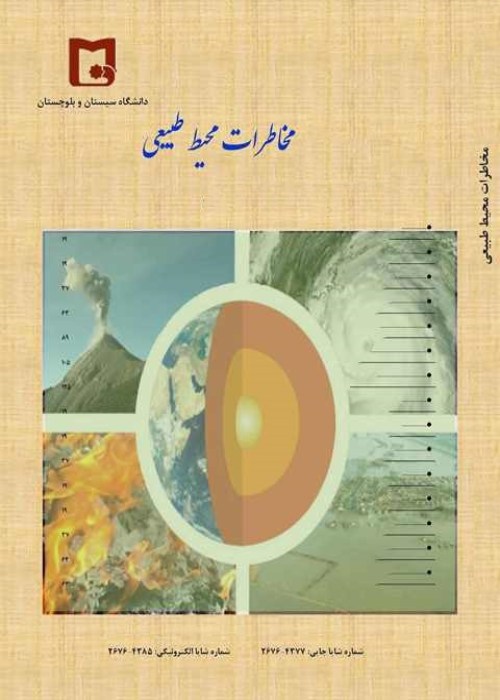Mid-tropospheric Trough and Severe Frosts in Iran
Author(s):
Abstract:
Sever frosts during autumn, winter and spring seasons cause damages in the agriculture, industry and transport parts of Iran every year. These frosts are including radiation and frontal types. The location of Iran in mid-latitudes and the spreading of westerlies over much of Iran especially during cold half-year provide the happening and strengthening of frontal frosts. The cA air-masses from north (Arctic basin), cP and mP ones respectively from northeast (Siberian basin) and (Europe and Black Sea basin) causes frosts in Iran. Our study area within 25° - 40° north latitude and 44° - 63° east longitude is at the risk of cold air attacks during cold half-year. Thus we selected 50 air stations from throughout Iran in the southwest of Asia. In first step, we determined 75 frost waves based on mean daily temperatures including the zero and under zero degrees Celsius during recent decade from 1994 to 2003 years. In second step, we could determine 31 cold air waves based on the daily distribution of low temperatures and so their beginning, peak and end (based on date), their severity (based on air temperature) and duration (based on day). We measured the depth of every trough during the peak day of every cold air waves for statistical analysis including plot and regression. Results showed the severe frosts have happened during winter except the frost wave of 1994 that happened during autumn. We found February as the most frosty month (based on the frequency of frosty days) and January as the coldest one. While it was accepted that spring frosts cause more damages, instead it our results showed that autumn ones has more frequency. It was determined that the location of western troughs at most in Iran is 10 degrees lower than middle location in southern hemisphere and frosts severity had significant relationship with troughs depth (58 %). Synoptic patterns showed that all axes were located over Eastern Iran and they are oriented northeastern-southwestern during peak days. This orientation facilitates very cold air flows from high latitudes toward southern areas. Migrant troughs from higher latitudes caused sever frosts and migrant troughs from low latitudes cause widespread ones. The irregular occurrence of continued and low temperatures over vast areas as frost waves is an expected characteristic for Iran climate. We were losing resources and products in North, Central and sometimes South of Iran because of these cold air waves. Although the safety of the frosts over Southern Iran is better than other parts but the water and soil resources of southern areas for agriculture are so limited. It means, we have many fertile plains and permanent rivers over Western and Northern Iran and so frost risk can not take up agriculture activities. It looks; reducing damage to growers in these damage-prone areas require changes in cropping patterns, usage of resistant and late seed and varieties as basic strategies.
Keywords:
Language:
Persian
Published:
Journal of Natural environment hazards, Volume:1 Issue: 2, 2013
Pages:
63 to 78
magiran.com/p1610991
دانلود و مطالعه متن این مقاله با یکی از روشهای زیر امکان پذیر است:
اشتراک شخصی
با عضویت و پرداخت آنلاین حق اشتراک یکساله به مبلغ 1,390,000ريال میتوانید 70 عنوان مطلب دانلود کنید!
اشتراک سازمانی
به کتابخانه دانشگاه یا محل کار خود پیشنهاد کنید تا اشتراک سازمانی این پایگاه را برای دسترسی نامحدود همه کاربران به متن مطالب تهیه نمایند!
توجه!
- حق عضویت دریافتی صرف حمایت از نشریات عضو و نگهداری، تکمیل و توسعه مگیران میشود.
- پرداخت حق اشتراک و دانلود مقالات اجازه بازنشر آن در سایر رسانههای چاپی و دیجیتال را به کاربر نمیدهد.
In order to view content subscription is required
Personal subscription
Subscribe magiran.com for 70 € euros via PayPal and download 70 articles during a year.
Organization subscription
Please contact us to subscribe your university or library for unlimited access!


